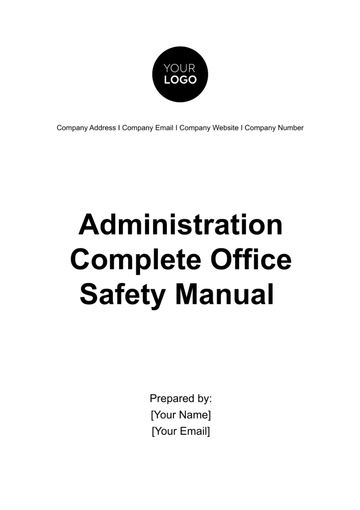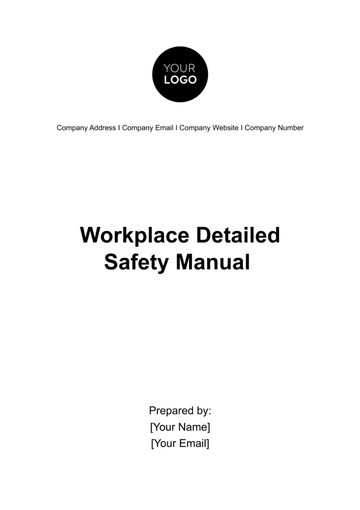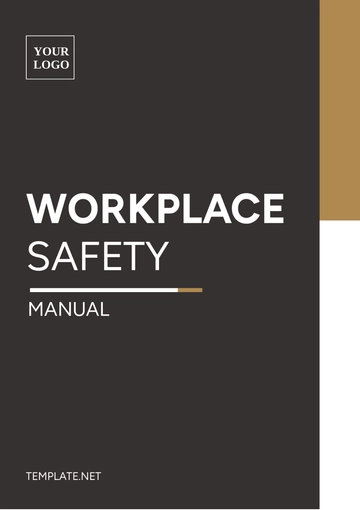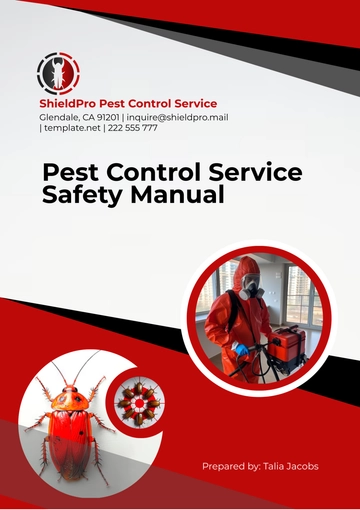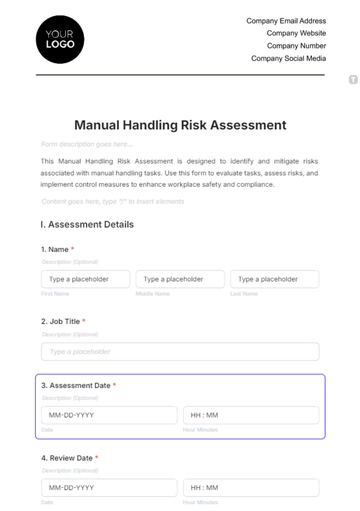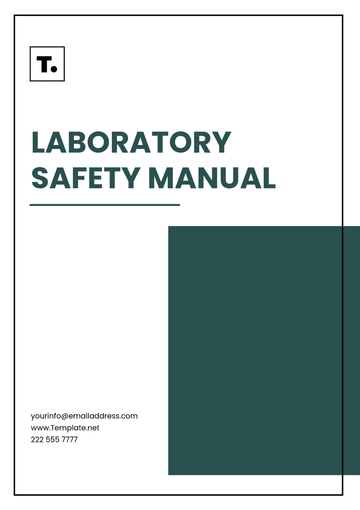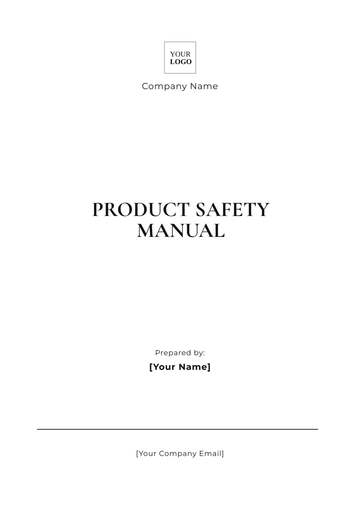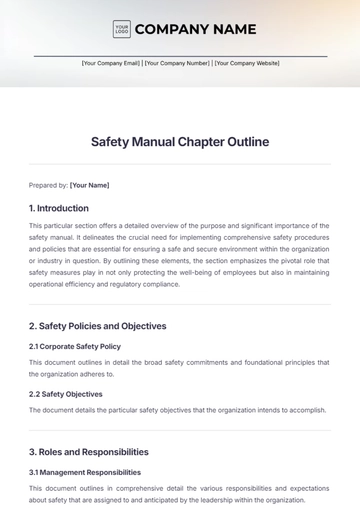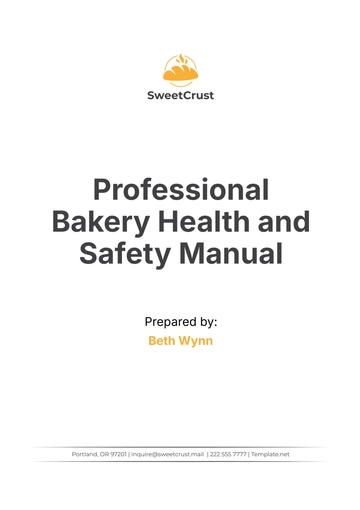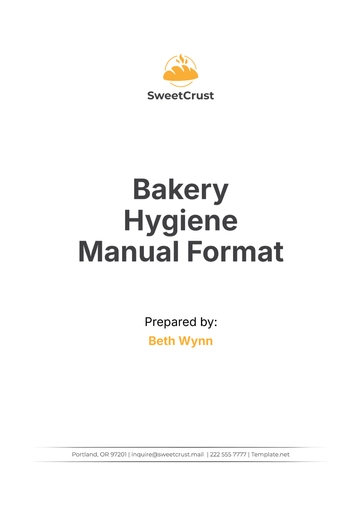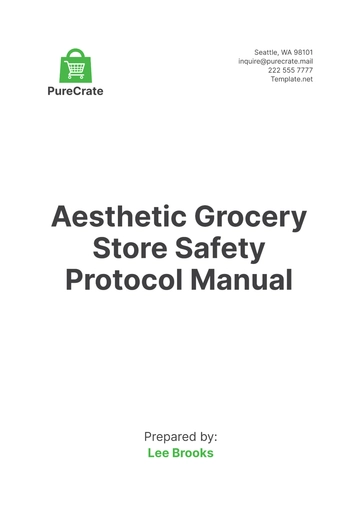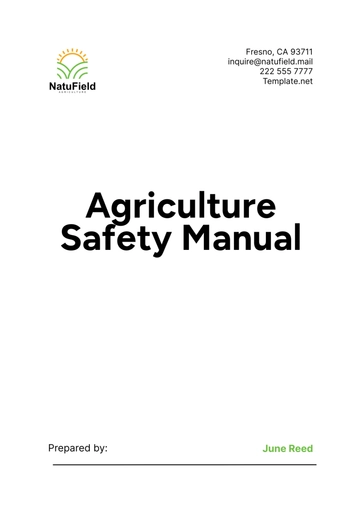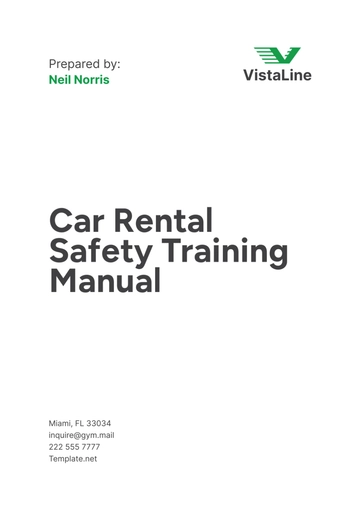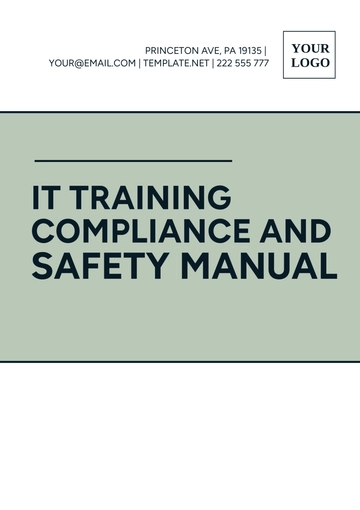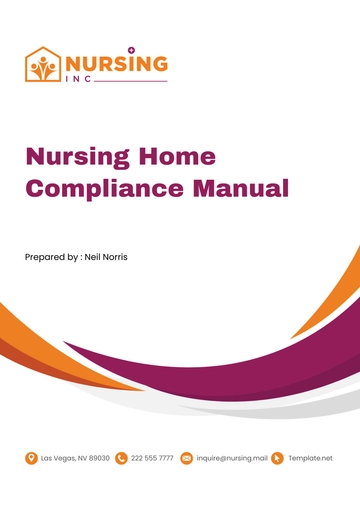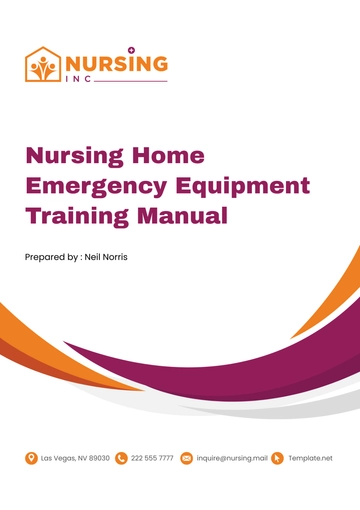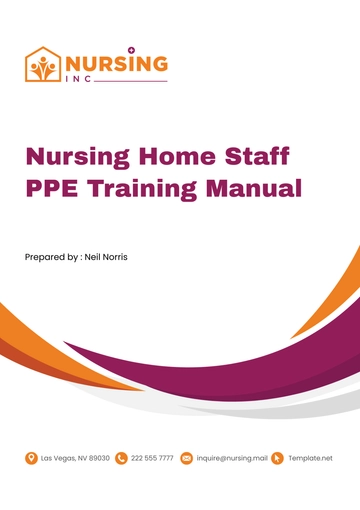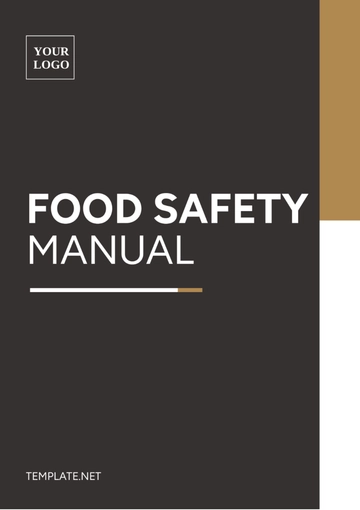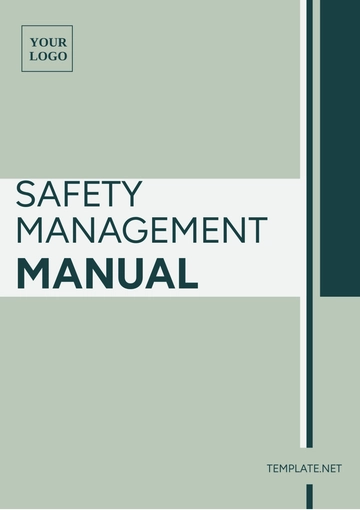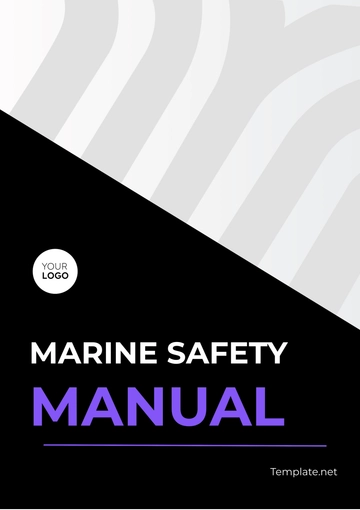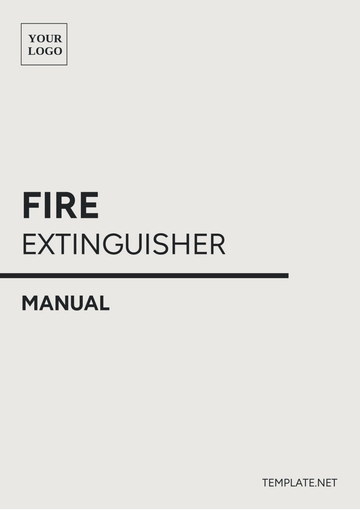Free Workplace Advanced Safety Training Manual
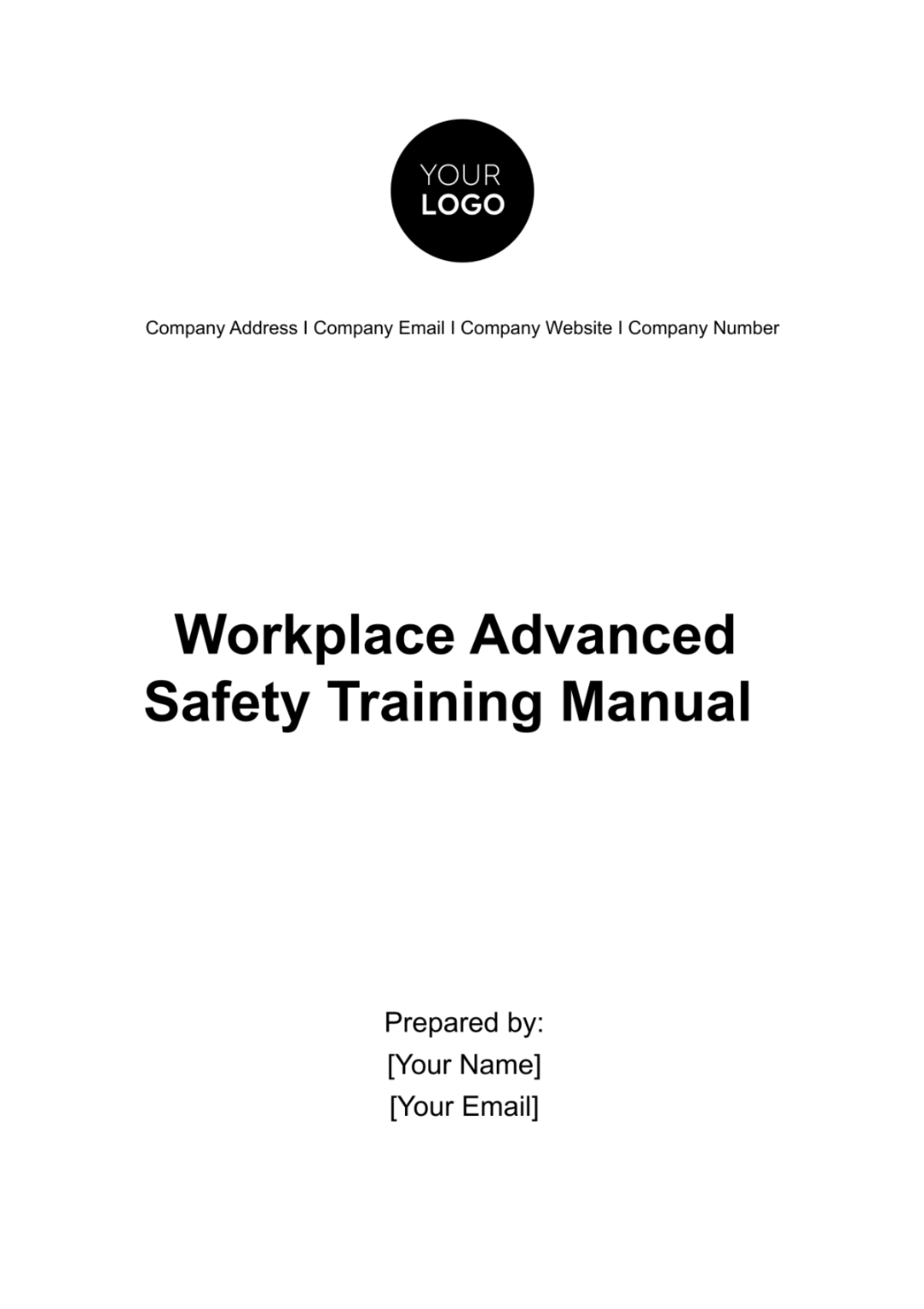
Introduction
A. Purpose
The primary purpose of this Workplace Advanced Safety Training Manual is to establish a culture of safety within [Your Company Name]. It is designed to ensure that every employee, from newcomers to long-standing team members, understands and prioritizes safety in all aspects of their work. By following the guidelines in this manual, we aim to reduce workplace accidents, injuries, and incidents, fostering a safer work environment for all.
B. Scope
This manual applies to all employees, contractors, and visitors associated with [Your Company Name], regardless of their role or department. Safety is a collective responsibility, and everyone within our organization is expected to adhere to the principles outlined herein.
C. Responsibilities
1. Employees: All employees are responsible for their safety and the safety of their colleagues. This includes following safety protocols, using personal protective equipment (PPE) as required, and reporting safety concerns promptly.
2. Supervisors and Managers: Supervisors and managers must lead by example and ensure that their teams follow safety procedures. They are responsible for providing adequate training, addressing safety concerns, and promoting a safety-conscious culture within their departments.
3. Safety Officer: [Your Company Name] has appointed a designated safety officer who oversees the implementation of safety measures, conducts safety audits, and facilitates safety training. The safety officer is the point of contact for all safety-related matters.
Safety Regulations and Compliance
A. Federal Regulations
[Your Company Name] is committed to complying with all relevant federal safety regulations, as mandated by OSHA (Occupational Safety and Health Administration). OSHA regulations set forth the minimum safety standards for workplaces in the United States. All employees must be familiar with these regulations to ensure their safety.
B. State Regulations
In addition to federal regulations, [Your Company Name] acknowledges and complies with state-specific safety regulations. These state regulations may include additional requirements or guidelines that must be followed. Compliance with both federal and state laws is essential for maintaining a safe working environment.
C. Company Policies
[Your Company Name] has developed its safety policies and procedures to address specific safety concerns within our organization. These policies are designed to align with federal and state regulations while also catering to the unique safety needs of our workplace. Our company policies are continuously reviewed and updated to reflect changing safety standards and emerging best practices.
D. Reporting Requirements
To maintain a safe working environment, it is crucial that all employees promptly report safety concerns, incidents, or violations. Reporting should be made to your immediate supervisor or directly to the designated safety officer. Timely reporting allows for swift corrective action and prevention of potential hazards.
Hazard Identification and Assessment
A. Types of Hazards
[Your Company Name] recognizes various types of hazards that can pose risks to employee safety. These hazards include but are not limited to:
Physical Hazards: Such as machinery, moving parts, and noise.
Chemical Hazards: Including exposure to hazardous substances and chemicals.
Biological Hazards: Like pathogens or biological materials.
Ergonomic Hazards: Related to improper ergonomics and repetitive tasks.
B. Risk Assessment
Risk assessments are conducted regularly to evaluate the severity and likelihood of potential hazards within our workplace. This process involves:
Identifying hazards associated with specific tasks or processes.
Assessing the potential consequences of these hazards.
Determining the likelihood of these hazards occurring.
Prioritizing and implementing control measures to reduce risks.
C. Control Measures
To mitigate identified hazards, [Your Company Name] employs a range of control measures, including:
Engineering Controls: Modifying equipment or processes to reduce or eliminate hazards.
Administrative Controls: Implementing safety policies, procedures, and work practices.
Personal Protective Equipment (PPE): Providing employees with appropriate PPE, such as helmets, gloves, and safety goggles, to minimize exposure to hazards.
Personal Protective Equipment (PPE)
A. PPE Selection
[Your Company Name] places a high priority on the selection and use of appropriate Personal Protective Equipment (PPE) to safeguard employees from workplace hazards. The selection of PPE is based on a thorough assessment of potential risks. Employees are responsible for the following:
Identifying the specific PPE required for their tasks, as outlined in the hazard assessments.
Wearing the provided PPE consistently while performing tasks where it is necessary.
Reporting any damaged or malfunctioning PPE to their supervisor or the safety officer for replacement.
B. Proper Use and Maintenance
To ensure the effectiveness of PPE, employees must adhere to the following guidelines:
Always wear PPE when and where required.
Ensure that PPE fits properly and is comfortable to wear.
Inspect PPE for damage before each use and report any issues immediately.
Clean and maintain PPE as per manufacturer instructions.
Store PPE in designated areas when not in use.
Emergency Response Procedures
A. Evacuation Plans
[Your Company Name] has established clear evacuation plans to ensure the safe and orderly evacuation of employees and visitors in the event of an emergency, such as a fire or natural disaster. Key components of our evacuation plan include:
Evacuation routes clearly marked and posted throughout the facility.
Designated assembly areas where employees should gather after evacuating.
Procedures for assisting individuals with disabilities during evacuations.
Regular drills and training to familiarize all personnel with evacuation procedures.
B. First Aid
Adequate first aid supplies and trained personnel are available at [Your Company Name] to provide immediate medical attention in the event of injuries or illnesses. This includes:
Location of first aid kits and automated external defibrillators (AEDs).
Designated first aid providers and their contact information.
Training in basic first aid and CPR for selected employees.
Procedures for reporting and documenting injuries and illnesses.
C. Fire Safety
Fire safety is a top priority at [Your Company Name], and all employees should be familiar with the following:
Location of fire extinguishers, fire alarms, and emergency exits.
Procedures for reporting fires and sounding alarms.
Evacuation procedures specific to fire emergencies.
Training in the proper use of fire extinguishers when safe to do so.
Machinery and Equipment Safety
A. Equipment Inspection
Regular equipment inspections are essential to identify potential hazards and ensure the safe operation of machinery and equipment. Employees should:
Conduct pre-use inspections as per equipment-specific checklists.
Report any equipment defects, malfunctions, or safety concerns to their supervisor.
Follow lockout/tagout (LOTO) procedures when performing maintenance or repairs.
B. Safe Operating Procedures
Employees must adhere to safe operating procedures when using machinery and equipment. This includes:
Familiarity with equipment manuals and instructions.
Proper training on equipment operation.
Using guards and safety devices as designed.
Following established procedures for equipment startup and shutdown.
C. Lockout/Tagout (LOTO)
LOTO procedures are implemented to safeguard employees from the unexpected startup or release of energy during equipment maintenance or servicing. All employees should:
Understand LOTO procedures applicable to their tasks.
Use lockout devices and tags as required.
Only authorized personnel are allowed to perform LOTO procedures.
Chemical Safety
A. Hazardous Chemicals
[Your Company Name] recognizes the importance of handling hazardous chemicals safely. All employees who work with or around chemicals should be aware of the following:
The identification of hazardous chemicals using Safety Data Sheets (SDS) and labeling.
The potential health hazards associated with specific chemicals.
The use of appropriate personal protective equipment (PPE) when handling chemicals..
Emergency procedures for chemical spills or exposures.
B. Chemical Storage
Safe chemical storage is vital to prevent accidents and protect employee health. [Your Company Name] provides guidelines for:
Proper storage of chemicals in designated areas.
Segregation of incompatible chemicals to prevent reactions.
Labeling of chemical containers with clear and accurate information.
Material Safety Data Sheets (MSDS)
Material Safety Data Sheets (MSDS) provide detailed information about the hazards, composition, and safe use of chemicals. Employees should:
Know the location of MSDS for all chemicals used in their work area.
Understand how to interpret MSDS information.
Seek guidance from supervisors or the safety officer if there are concerns about chemical safety.
Electrical Safety
A. Electrical Hazards
[Your Company Name] is committed to ensuring electrical safety within the workplace. All employees should be aware of the following electrical hazards:
Electrical shock, which can result from contact with live wires or faulty equipment.
Arc flash, a dangerous electrical explosion that can cause severe injuries.
Overloads, short circuits, and electrical fires.
B. Safe Work Practices
To minimize electrical hazards, employees must adhere to safe work practices, including:
Using appropriate PPE when working near live electrical equipment.
Avoiding overloading circuits and outlets.
Reporting damaged or faulty electrical equipment.
Following established procedures for working on or near electrical systems.
C. Electrical Equipment Maintenance
Regular maintenance and inspection of electrical equipment are essential to prevent accidents. Employees should:
Not attempt to repair electrical equipment unless trained and authorized.
Report any electrical issues promptly.
Ensure that electrical panels and switches are accessible and unobstructed.
Confined Space Entry
A. Confined Space Definitions
[Your Company Name] defines confined spaces as areas that meet the following criteria:
Limited entry and exit points.
Not intended for continuous occupancy.
Potential hazards related to atmospheric conditions, engulfment, or confined space configuration.
Employees must be aware of confined spaces in the workplace and their associated risks.
B. Entry Procedures
Entering confined spaces requires careful planning and adherence to specific procedures, including:
Conducting atmospheric testing before entry to ensure safe oxygen levels and absence of hazardous gasses.
Assigning a confined space entry supervisor to oversee the process.
Providing employees with appropriate PPE, such as harnesses and respirators when necessary.
C. Atmospheric Testing
Before entry into a confined space, atmospheric testing must be conducted to ensure that it is safe for human occupancy. Employees involved in confined space entry should:
Understand how to use gas detectors and atmospheric testing equipment.
Be aware of the potential for hazardous atmospheres and the steps to mitigate them
Communicate effectively with the confined space entry supervisor and team members.
Fall Protection
A. Fall Hazard Recognition
[Your Company Name] is dedicated to preventing fall-related injuries. All employees should be able to recognize fall hazards, including:
Unprotected edges and openings.
Elevated work surfaces without guardrails.
Unstable walking or working surfaces.
Slippery or cluttered areas that could lead to tripping.
B. Fall Prevention Measures
To prevent falls, employees are required to take the following precautions:
Use guardrails, safety nets, or personal fall arrest systems when working at heights.
Ensure that walking surfaces are clean, dry, and free from hazards.
Use fall prevention devices, such as safety harnesses, when working near unprotected edges.
C. Fall Arrest Systems
In situations where fall hazards cannot be eliminated, employees must use fall arrest systems properly. Training and equipment specific to each situation will be provided to ensure safe use.
Health and Wellness
A. Employee Wellness Programs
[Your Company Name] values the health and wellness of its employees. To promote a healthy work environment, we offer wellness programs that include:
Health screenings and assessments.
Fitness and exercise programs.
Smoking cessation support.
Mental health resources.
B. Occupational Health Services
Occupational health services are available to address work-related health issues, including:
Work-related injuries and illnesses.
Ergonomics assessments.
Vaccination programs.
Health education and counseling.
C. Ergonomics
[Your Company Name] recognizes the importance of ergonomics in preventing musculoskeletal disorders. Employees should:
Maintain proper ergonomic posture when working at desks or workstations.
Report any discomfort or ergonomic issues to their supervisor.
Participate in ergonomics training and assessments as required.
Training and Recordkeeping
A. Training Requirements
[Your Company Name] provides comprehensive safety training to employees. Training includes:
General safety orientation for all employees.
Job-specific safety training for specialized roles.
Periodic refresher training to reinforce safety knowledge.
Training records to document completion.
B. Training Records
All training records are maintained by [Your Company Name]. These records include:
Employee names and training dates.
Training content and materials.
Instructor information.
Certification and competency assessments.
C. Certification
Employees who complete required safety training and demonstrate competency will receive certification. Certification ensures that employees are qualified to perform their roles safely.
Conclusion
[Your Company Name] is dedicated to providing a safe and healthy work environment for all employees, contractors, and visitors. This Workplace Advanced Safety Training Manual serves as a comprehensive resource to guide individuals in understanding and implementing safety measures across various aspects of our workplace.
We encourage all employees to actively participate in maintaining a safety-conscious culture within the organization. By adhering to the principles outlined in this manual, we can collectively reduce workplace accidents, injuries, and incidents, thereby fostering a safer and more productive work environment.
- 100% Customizable, free editor
- Access 1 Million+ Templates, photo’s & graphics
- Download or share as a template
- Click and replace photos, graphics, text, backgrounds
- Resize, crop, AI write & more
- Access advanced editor
Introducing Template.net's Workplace Advanced Safety Training Manual Template, an essential resource for comprehensive safety training. Fully customizable and editable with our Ai Editor Tool, this template enables businesses to tailor training programs to specific needs. Streamline safety education efforts and enhance workplace safety standards effortlessly using our user-friendly platform. Simplify training procedures and promote a safer work environment with this comprehensive manual solution.

